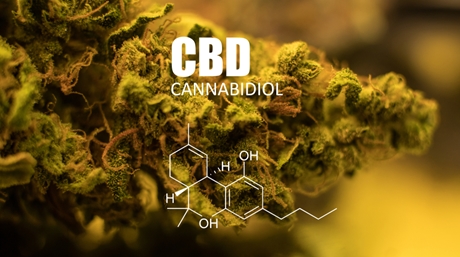It’s a million-dollar question, especially, to those who participate in games or participate in national and international activities that do not want participants to use particular drugs.
Before we look for the answer to that important question, it is prudent to mention a few things.
First, before you think about whether there are possibilities of CBD showing up during a medical test, you must understand what CBD oil is. Understanding all the details of CBD oil, how it manifests itself in the human body, the difference between CBD oil and marijuana, and other subtle details will be the best way to approach the question, will CBD oil show up on a drug test?
Besides, it is equally important to understand how and why cannabis drug tests are done. Finally, it is vital to know another related question, which is equally important – will CBD hemp oil show up on a drug test?
Athletes and various sportsmen and women fear drug tests. When subjected to drug tests, these sportsmen and women are usually scared because even if they have not ingested any prohibited drugs, some of them might ingest the prohibited drugs without their knowledge. Thus, when asked to volunteer for a drug test a few days before an international competition, they get nervous. Should they really get scared?
Well, that reminds us of the big question – will CBD oil show up on a drug test? Generally, it won’t show up! Why? When drug tests are done, the aim is not to determine the amount of CBD oil in the body.
Instead, most drug tests are carried out to determine if the person has tetrahydrocannabinol (THC) in the body. In fact, proper tests have the ability to identify if the person has THC’s metabolites.
Therefore, put simply, a majority of drug tests are not aimed at testing for CBD oil. Rather, they are aimed at testing for THC.
Having said that, it’s prudent to mention that people that go for drug tests should beware of something that may be more detrimental to their career or reputation. Although the aim is not to test for the level of CBD level in their blood, there are slim chances that CBD may show up during a THC drug test.
One of the main reasons why someone may fail a drug test is that some CBD oil products in the market are filled with low THC quantities. With that in mind, it simply means one is likely to fail a drug test, theoretically. So, again, will CBD show up on a drug test? The answer is yes, and no. It will depend on the THC in CBD products.
Here is the point: While most CBD products take pride in containing zero THC, a mistake such as contamination during the processing of certain CBD products can jeopardize the whole thing, making it possible for one to fail terribly during a THC drug test. Besides, even the most genuine manufacturer of a certain CBD product can make a mistake during labeling, thus providing incomplete or even wrong content details.
So, what is the answer to the question, will CBD hemp oil show up on a drug test? Hitherto, we have seen that although it is rare, there is a possibility of someone failing a drug test, not because of CBD oil showing up during a drug test but because of the low quantity of THC present in a CBD product thus, one can fail the test.
Let’s start by clearing out something. If you are using topical products that contain CBD, you shouldn’t worry even if you have a highly-televised drug test ahead. Why? The main reason is products such as creams, shampoos, and various cosmetics do not infiltrate your body. In fact, topical products do not go past the human skin.
However, things are likely to be different, even complicated, if you are using CBD products that enter the body and finally find their way inside the bloodstream. We are talking about CBD oil teas, gummies, and transdermal patches. All these three CBD products find their way into the bloodstream.
Again, the tricky part is that some of the acclaimed CBD products people buy online may actually contain some more than the legal THC amounts.
Depending on the amount of CBD oil and how often one uses the products with some THC quantities, one is likely to fail a drug test even if it is 15 days after using the product. In fact, the drug test can detect THC in one’s urine even if the person stopped using the product fifteen days before he or she went for the test.
On the other hand, CBD oil does not stay in the body for long. Depending on the frequency and dosage, the chances of CBD staying in the body beyond 5 days are minimal. However, regular CBD oil users may have the substance remain in their bodies longer than that but not as long as THC.
In a recent study on 85 CBD products bought online, close to 20 of them contained THC. What does that mean? The study reveals that incidentally, there are high chances of landing on bad CBD products. As mentioned earlier, you may not have wanted to take any THC, but you might find large amounts of it in your bloodstream if you are not cautious. That explains why some people fail a THC drug test meant to test for THC.
Are you constantly concerned about whether will CBD oil show up on a drug test? Well, although there is no proven guarantee, some experts suggest a few ways you can ensure THC does not pop up during a THC drug test.
But even before we talk about those hacks, let’s continue for a while longer on what can increase the chances of failing a forthcoming THC drug test.
Depending on the way cannabis is harvested, it will answer the questions; will CBD oil show up on a drug test, and or will CBD hemp oil show up on a drug test? Ideally, some harvesting and refining methods make it easy to mix the unwanted amount of THC in whole CBD oil or its final sub-products. In fact, experts warn that bad harvesting and refining practices can change which and the number of compounds that appear in the finished product.
CBD extracts in the market are typically labeled in the following three ways:
1. Full-Spectrum CBD – the keyword in this label is ‘Full,’ which denotes that the CBD product in question has all the compounds, which occur naturally inside the plant(s) the products were derived from. That simply means that a ‘Full-spectrum CBD’ product is bound to contain flavonoids, terpenes, and myriads of other cannabinoids including THC. Therefore, if you use Full-spectrum CBD a few days before a drug test or for a long time, you know the answer to the question; will CBD oil show up on a drug test?
Nonetheless, there is a sigh of relief for you: if you use Full-spectrum CBD that has been derived from a mature hemp plant, chances are you may pass a drug test because most CBD oil products derived from mature hemp plants contain the legally-required THC.
2. Broad-Spectrum CBD – broad-spectrum CBD products are similar to Full-spectrum CBD products in one major way – they also contain several compounds that occur naturally in a mature cannabis plant. However, the major difference is products labeled Broad-spectrum CBD DO NOT contain any traces of THC.
Thanks to its lack of THC, you can now answer the question; will CBD oil show up on a drug test, where the answer is a resounding NO!
However, there is also a major setback with Broad-spectrum CBD. The product is scarce. It is not easy to find the product. In fact, most of the products labeled ‘Broad-spectrum CBD’ are often sold in major stores as oil, making it difficult for users to find it to misuse it.
3. CBD Isolate – we have spoken about this product alongside Full-spectrum CBD earlier. CBD Isolate DOES NOT harbor any traces of THC traces. It’s pure CBD. Typically, manufacturers extract CBD Isolate from mature hemp plants. In other words, if indeed the CBD Isolate product you are using has been taken from a hemp plant, you shouldn’t ask yourself; will CBD hemp oil show up on a drug test? The answer is, it will not since CBD Isolate derived from a mature hemp plant does not have any amount of THC.
Like Broad-spectrum CBD, CBD Isolate is also processed, packaged, and sold as oil. Besides, the product is also available as a tincture, solid slab, which you can break apart and eat, or as a crystalline powder.
Contamination of CBD products with THC happens when the same manufacturer makes both products. While some competent manufacturers try their best to avoid any THC contamination, some THC traces are likely to find their way into CBD products. So, will CBD hemp oil show up on a drug test if a mistake during production happens?
The most ridiculous in this is that CBD oil can receive the same contamination measure at the shop, store, or even at home.
If you don’t want to suffer any doubts of the CBD product having THC, experts suggest you look for products that DO NOT carry the label that reads ‘Full Spectrum CBD.’ Those CBD products with the aforementioned label simply mean that the product in question is extracted from the whole plant. With that in mind, it is believed that the product will have LIBERAL amounts of CBD.
On the other hand, CBD products labeled ‘CBD Isolate’ are seen by experts to be fair for use on the verge of a THC drug test. Although there is no guarantee of lack of THC, many of the products with CBD Isolate labels usually don’t have any trace of THC, or even if they do, the amount is extremely minimal.
In other words, most CBD Isolate-labeled products do not carry THC because they are extracted from hemp. It is important to know these products do not contain cannabidiol.
Besides, industry experts, including our in-house experts, recommend that you are not left without choice if you want to have proper CBD products that do not contain any THC trace.
According to those experts, the first way is to confirm the real CBD and THC content in the CBD product from the manufacturer. The second way is to go for CBD products with a third-party testing company, usually, independent labs.
To this end, will CBD hemp oil show up on a drug test? The most reasonable answer is no! If indeed the CBD product in question has been extracted from a mature hemp plant, you shouldn’t worry about failing a drug test. However, you should be worried about something more.
Yes, will CBD oil show up on a drug test? Although we have seen that it might not show up during a drug test, the cases are isolated. Otherwise, this part delves into another possibility that you will fail a THC drug test.
As we have seen already, it appears that many CBD products in the market have traces or some amounts of THC or its various components. As such, you are likely to fail a THC drug test if you take large amounts of CBD products that may carry THC.
Besides, if you use CBD products regularly for a long time, chances are the amounts of THC level in your blood will also increase, thus become a hindrance during a THC drug test. With that information in your palms, it is evident that the answer to the question will CBD oil show up on a drug test is positive.
The main reason why CBD oil will show up during a drug test is that, as it were, when you take CBD oil for a long time, it will also take several days, weeks, or even months to get out of your bloodstream.
The last reason that you will fail during a forthcoming drug test is the legality question of most CBD products in the market. It is not the first time we are addressing this point. Therefore, if you are still wondering; will CBD hemp oil show up on a drug test, the answer to this question at this point is confusing. Let’s explain.
The legality of most CBD products in the market is questionable. It emerges that certain CBD products are produced from different cannabis and marijuana strains. As such, it is hard to trace to the core of the type of stain that produced certain CBD product.
Besides, some states in the USA and scores of other European countries, do not recognize certain cannabis plants, which coincidentally produce certain CBD products. The main reason for such illegality is that some of the cannabis varieties can produce high amounts of THC.
On the other hand, most CBD products made from hemp plants are legal in many parts of the world, including several states in the United States, many parts of the European Union, and other parts of the world.
For these CBD products made from the mature hemp plant to be accepted for use, thus give assurance that they will not fail one during a THC drug test, the products must contain less than 0.3% and 0.2 THC in USA and EU, respectively.
What Is Tested During A Drug Test?
During a drug test, the following are tested and varying amount of THC is likely to show up in the event you have used CBD products that contain liberal amounts of THC a few days before the drug test:
For a long time, we have been juggling between these two queries:
Let’s see if we have definite answers.
It is unlikely that CBD will show up during a drug test because, in most cases, drug tests are not done to reveal the amount of CBD in your blood. Instead, the test is done to show if you have any trace of THC in the body.
The only time you will fail during a drug test is if and when YOU ARE USING CBD PRODUCTS THAT CARRY SOME AMOUNTS OF THC. This last part is tricky because most CBD products in the market often carry some amounts of THC.
Therefore, if you choose your CBD products carefully, there is no reason to worry even if you face dozens of THC drug tests.
No! It is most unlikely that you will fail during a drug test or CBD hemp oil show up during a drug test if indeed the CBD product you’ve been using was extracted from a mature hemp plant. Hemp plants do not have a history of having any THC traces, which is the biggest and perhaps only culprit during a drug test.
Finally, if you don’t want to fail an upcoming drug test, you should only buy your preferred CBD products from manufacturers or stores you trust. Otherwise, beware that other drugs are likely to interfere with your urine, thus show false or fake positive results during a drug test. That would be detrimental to your career or reputation.
1. Will CBD oil show up on a drug test?
CBD oil typically doesn’t show up on a drug test because these tests are designed to detect THC, not CBD. However, if the CBD product contains even trace amounts of THC, there is a small chance it could lead to a positive result.
2. Can using CBD products cause you to fail a drug test?
Yes, it’s possible to fail a drug test if the CBD product you’re using contains THC, even in small amounts. This can happen due to contamination during production or if the product is mislabeled.
3. Is CBD hemp oil safe to use before a drug test?
Generally, CBD hemp oil is safe to use before a drug test if it’s derived from mature hemp plants and contains less than 0.3% THC. However, it’s crucial to ensure that the product is from a reputable source to avoid any THC contamination.
Related Posts

CBD, a non-intoxicating component of cannabis, is noted for its therapeutic properties, offering relief from anxiety and other conditions without the side effects of THC. High-CBD seeds, legal in areas where medical cannabis is permitted, are a popular choice for those seeking natural remedies. These seeds are designed to maximize the therapeutic potential of CBD, making it easy to grow CBD-rich plants for medicinal use.

The world of CBD (Cannabidiol) is as vast and varied as the benefits it is believed to hold. Among the many forms of CBD products available, three stand out for their unique properties: Full-Spectrum CBD, Broad-Spectrum CBD, and CBD Isolate. They differ mainly in their composition of cannabinoids, the biologically active compounds in the Cannabis Sativa plant.
Full-Spectrum CBD retains…

CBD, or Cannabidiol, is known as the cannabinoid that does not make you high or the cannabinoid without psychoactive effects. But what is the influence of CBD on the human body? What effects does CBD have on the brain? Is CBD not at all psychoactive? This article answers all your questions about CBD.

Love what you’re reading? Take your growing journey to the next level with our hand-picked seed recommendations just for you!
Act now and grab these strains to bring your garden to life!
Code valid for a limited time. Don’t miss out!
*It only works for registered AMS users. Register here!